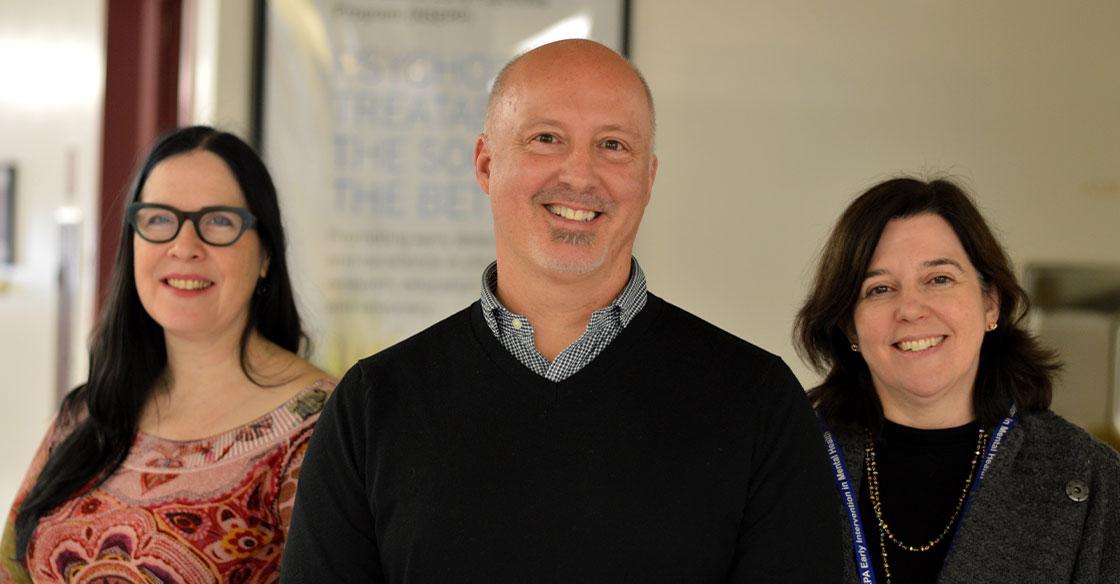
Originally published on qe2times.ca.
A ground-breaking study underway at the QEII Health Sciences Centre will scan brains to see what effect cannabis has on the white matter — the tissue in the brain composed of nerve fibres - of young patients dealing with psychotic disorders.
Dr. Phil Tibbo, QEII psychiatrist and the Dr. Paul Janssen Chair in Psychotic Disorders, wants to understand how cannabis — and THC in particular — affect neural connections in developing brains. Dr. Tibbo and his team, including Drs. Sherry Stewart, Candice Crocker, James Rioux and Jacob Cookey, think it may weaken the connections for younger and regular users of cannabis.
“The use of cannabis in adolescence increases the risk of developing psychosis or schizophrenia,” he says. “The younger that you use, the higher that risk. The more that you use during adolescent years, the higher the risk.”
The three-year study, funded by the Canadian Institutes of Health Research and Research Nova Scotia Trust, recently got underway and will compare people aged 18-30 in four groups of 90 people. One group will be people with early-phase psychosis who use cannabis, and one group will be those with early-phase psychosis who do not use cannabis. The other two groups will be people without those disorders — one group that uses cannabis and one that doesn’t. While Halifax is the primary site for this study, some of the participants will be recruited from London, Ontario with the help of co-investigators Drs. Lena Palaniyappan and Ali Khan.
Dr. Sherry Stewart is a professor of psychiatry, psychology and neuroscience at Dalhousie University. She’s also a Canada Research Chair in addictions and mental health. She’ll help Dr. Tibbo’s team gauge usage levels.
“I bring to the study some expertise in addictive behaviours and disorders,” she says. “I’m very interested in the co-occurrence of mental health and addictive disorders.”
She’ll use a “timeline follow-back procedure” to help determine how much cannabis a participant uses. Dr. Stewart uses memory anchors to help people be more accurate in their estimates. A calendar helps participants link their use levels relative to any special events that help them remember their cannabis usage occasions more vividly.
Participants in Dr. Tibbo’s study undergo clinical and cognitive testing and spend about an hour in an MRI machine. Dr. Tibbo says there is extensive literature about the connection between psychotic disorders and cannabis use, but little looking directly at its impact on brain white matter.
“The use of cannabis in adolescence increases the risk of developing psychosis or schizophrenia.” -Dr. Phil Tibbo
“There’s a lot of really good things that can come out of this research. One is it may help us figure out how cannabis can affect white matter within the brain, leading us to further examine novel treatment options,” he says.
His research partner, Dr. Candice Crocker, says the prevailing theory for the causes of psychosis is that “the brain isn’t wired right.”
“The connections aren’t made properly,” adds Dr. Crocker. “We have evidence that cannabis — particularly the THC in cannabis — acts on the connections themselves and makes the white matter thinner.”
She compares white matter to the plastic coating on electrical wires; eroding the coating slows the system. She thinks that’s what happens when people who have psychosis use cannabis. To prove it, they need large, detailed studies like this one.
The MRI images will show the white matter at the start of the study and again at the end of the study. It might not show clear differences on an individual level, but it will give them a collective picture if the white matter is indeed affected.
Research has also shown that the higher the THC level, the greater the impact. Dr. Tibbo says the recent legalization of cannabis will help the study, as cannabis sold in Nova Scotia tells you the THC level — something few users would have known when buying it illegally.
The team is focusing on younger people because of the way brains develop. Humans have what’s called an endocannabinoid system and cannabinoid receptors in the brain. They help the brain develop and are very active from gestation to after adolescence and young adulthood. When you are 25 or older, that changes — the receptors decline and move more to grey matter, a major component of the central nervous system.
“That’s why THC during those adolescent years will have a different effect than THC on the brain in someone who’s 30 or 40,” Dr. Tibbo says.
If the results confirm their hypothesis, it could improve treatment for young people with psychotic disorders. For example, they could get help quitting cannabis early on so as to not make things worse for their psychosis. They could also use medications that help repair white matter and thus make their brain healthier.